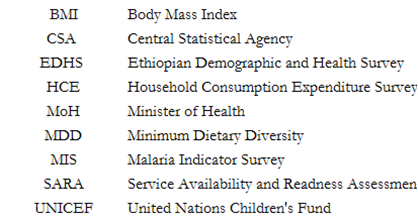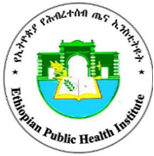
Regional Nutrition Dashboard
National Information Platform for Nutrition (NIPN)
Ethiopian Public Health Institute (EPHI)

What is Malnutrition?
Malnutrition occurs due to lack of proper nutrition that is needed to maintain health and wellbeing. Undernutrition and overnutrtion are two forms of malnutrtion. Undernutrition is manifested as stunting, wasting, underweight and micronutrient deficiencies. Overweight and obesity are manifestations of overnutrition. Although advances have been made in the past decade, the burden of malnutrition remains high across all regions in Ethiopia.
Why is it important to invest in nutrition?
Malnutrition increases disease burden and lowers productivity. In contrast, good nutrition i s necessary to reduce poverty, drive economic growth and achieve sustainable development. The annual cost associated with child undernutrition is estimated at 55.5 billion Ethiopian birr (ETB), equivalent to 16.5% of gross domestic product.
This dashboard presents nutrition related information to enable decision-makers monitor status of indicators when defining priorities.
What causes malnutrition and how to improve it?
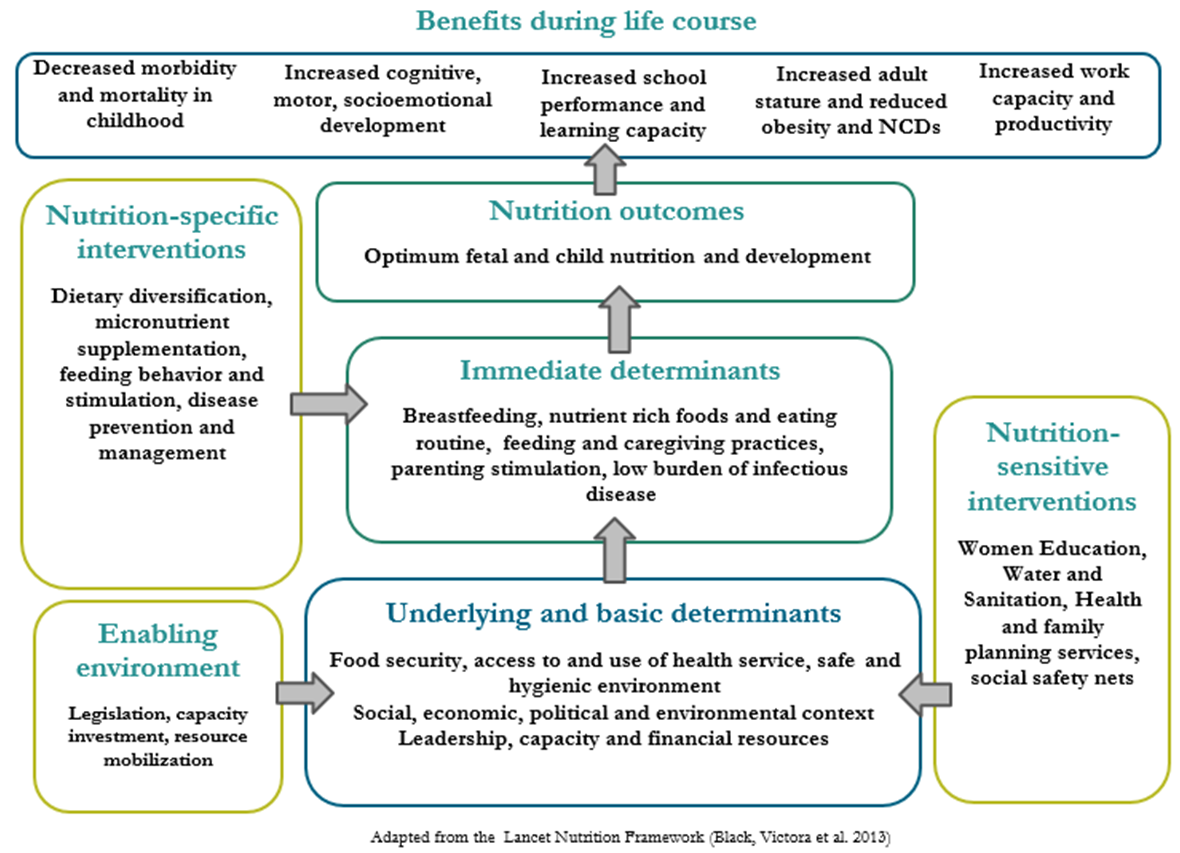
What is the current regional nutrition situation?
Child malnutrition
Stunting is an indicator of chronic undernutrition. Stunted children are short for their age. Poor school performance and reduced productivity are some of the long term consequences of stunting.
Stunting trends among children aged under-five years (2000-2016)1,2,3
What is the current regional nutrition situation?
Child malnutrition
Wasting is an indicator of acute undernutrtion and usually occurs due to rapid weight loss due to illness or low food intake. A wasting prevalence above 5% is a cutoff for public health significance.
What is the current regional nutrition situation?
Women malnutrition
Women’s nutrition is a key determinant of child nutrition and wellbeing. Hence, improvement of women’s nutrition is an important component of malnutrition reduction efforts.
![]() The increase in overweight among urban women highlights the need for more interventions in this area.
The increase in overweight among urban women highlights the need for more interventions in this area.
Points for discussion
- Prevalence of anemia among women remains a public health issue with most regions having anemia rates greater than the 12% target set by the NNP II.
- What explains the diffrence in rate of incrase of obesity in urban Vs rural women?
Immediate determinants of malnutrition
Infant and Young Child Feeding
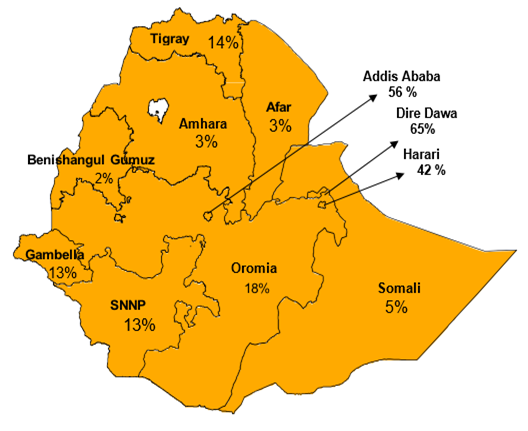
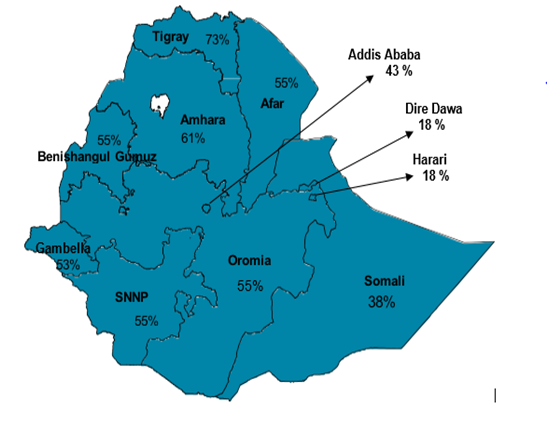
Disease Burden
Which nutrition-specific interventions are implemented?
Underlying and basic determinants of malnutrition
Status of Women
Socioeconomic status
Food security
Water Sanitation & Hygiene
Basic water and sanitaion coverage is importatnt to reduce diasese incidence which is an immediate determiant of undernutrition.
Which nutrition-sensitive interventions are implemented?
Budget allocation to nutrition
Enabling environment
A MultiSectoral National Nutrition coordination body oversees implementation of the National Nutrition Program II.
Legislative provisions


